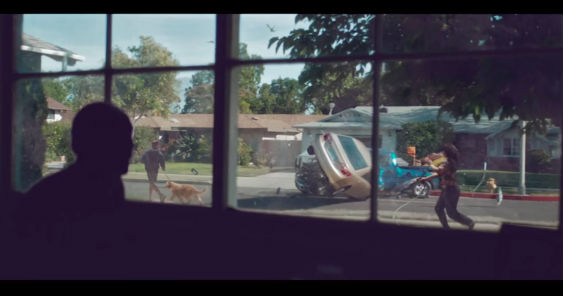by Anna Gamboa
AT&T says #itcanwait.
In the aftermath of a horrendous car accident being played in reverse in slow motion, the camera pauses tellingly on the smartphone hanging in mid-air, the mobile accomplice in this tragic event as the scene quickly fades and words scroll along a blank in the sentence “No _____ is worth a life.” –as a male narrator gently says “AT&T reminds you—it can wait.”
No post is worth a life.
No glance is worth a life.
No email is worth a life.
No search is worth a life.
No text is worth a life.
Directed by Anonymous Content’s Frederic Planchon for BBDO New York, “Close to Home” starts off like a perfectly ordinary day in suburbia, ending in devastating tragedy as a distracted mom takes her eyes off the road for a second to look at her social media account, resulting in her car smashing into a pickup and flipping over at least a couple of times.
The video ends with the website address itcanwait.com, where people can share their experiences/lessons from these incidents and download an app called the AT&T Drive Mode, a free app for post-paid customers which lets people know that the mobile user is at the wheel (it automatically switches on when the mobile device detects that a speed of 15 mph or more), and mutes potentially distracting message alerts. Parents will receive an alert if the app of a young member of the family is turned off.
A journey that started in 2010, #itcanwait dealt with the spate of mobile-related auto accidents on the rise, dissuading audiences from texting and driving as early as 2010. Two years later, the campaign reached out to schools and communities, then in 2013 shifted into advocacy to show that using mobile devices while operating a vehicle was as dangerous as drunk driving. In 2014, the hashtag #X was used to signify pausing from social media activities to focus on driving and road safety.








